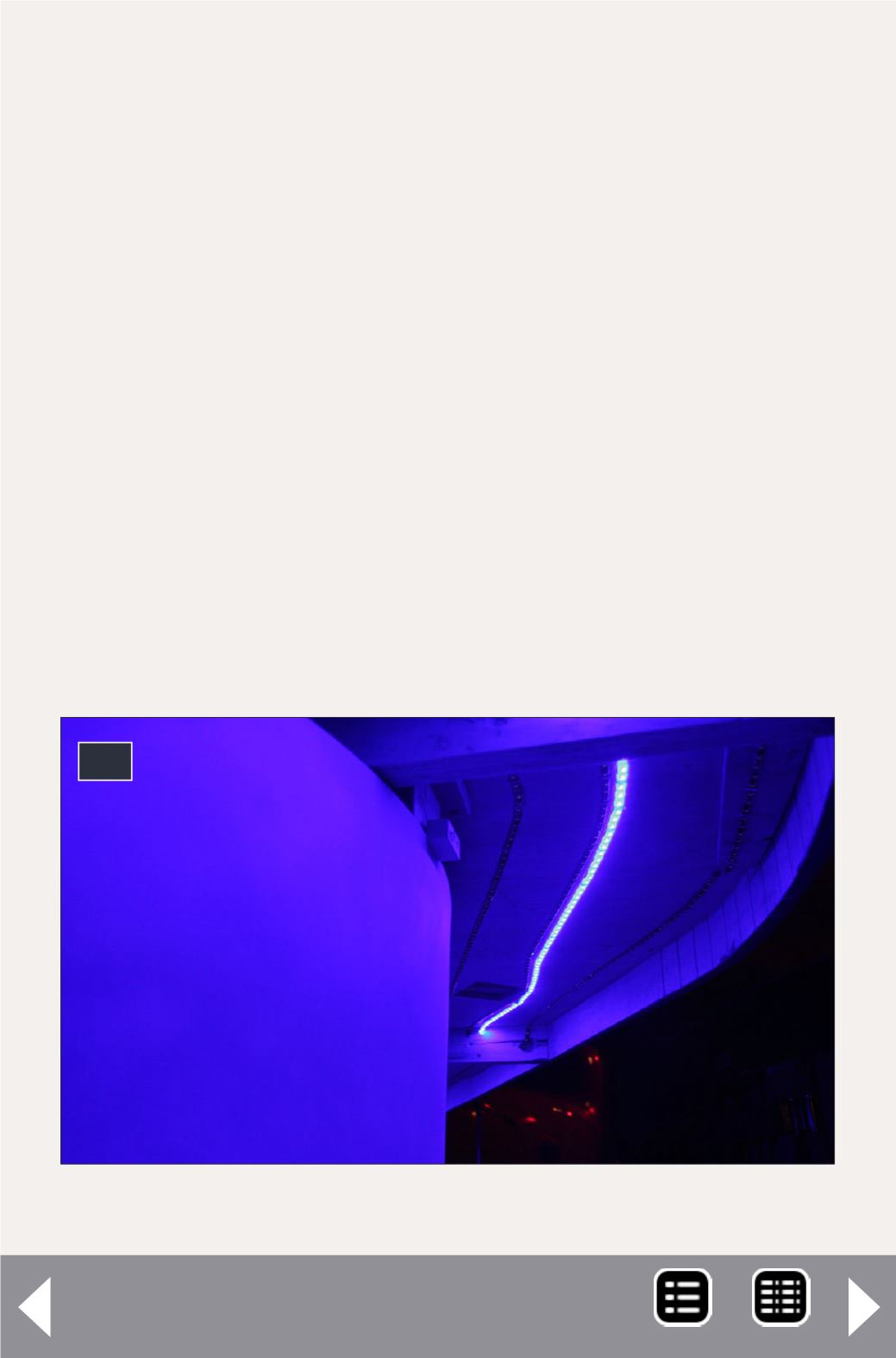
Getting Real column - 18
44: Blue LED strip for “night lighting”.
44
scenery, but I think the effect of sunrise behind trees/build-
ings/hills will be worth the effort. All this was made possible
because of the ½” width of the LED strip. Incandescent or
fluorescent red lights, would require a much greater depth to
accomplish this. I have placed some boxes in front of the red
LED strip (in the center of the photo) to simulate what the
glow on the horizon would look like behind buildings and hills
with the LED strip hidden behind them (45).
A serendipitous result was achieved turning on both the blue
lights above and the red light below. This provides a very nice
red/violet/blue transition between night and dawn lighting
(46). I was also amazed to discover that the Warm White, Red
and Blue strips make up a total of about 10,000 LED’s! Only
today’s cheaper prices make this cost-effective. On an average,
using three Warm White strips, one Blue and one Red strip per
foot works out to about $3 per lineal foot.
MRH-Jan 2013


